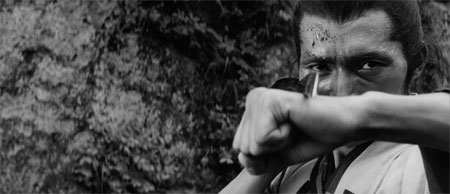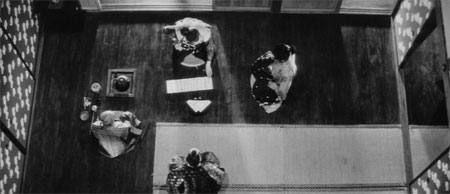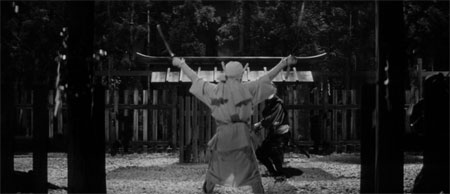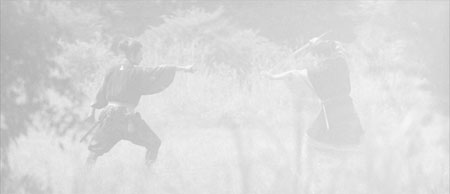A part of this viewing list: Criterion Collection Spine #312: Masahiro Shinoda’s Samurai Spy.

Like any good spy movie, most of the time in Samurai Spy the viewer doesn’t know who is who, who is what and who is where. This is good. The film also has a bit of an Ian Fleming flair to the whole affair; spies banging other spies for information, for example. The film also reminded me very much of manga; it appears that Shinoda used telephoto lenses quite often, resulting in shots that feel compressed almost to two-dimensionality. The camera crew must’ve been simply amazing though, because there are many shots that require exact adjustments of focus nearly instantaneously, and just as many long-takes which start out in a compressed long shot, but end in close-up. The camera isn’t moving, just the actors. The film is beautiful and worth watching simply for the shot-framing, cinematography, and camera work. A masterpiece of technique.

I think this film is also the first old Japanese film I’ve seen that uses special effect techniques that films like Crouching Tiger Hidden Dragon owe a strong debt to. When they want to, samurai and ninja move absolutely silently, thanks to a lack of sound track and the tactical use of Foley to render other ambient sounds. This works at all points, except once, where Sasuke jumps onto a roof and we see the tiles shake and dust arise, but hear nothing. Pretty much all of the characters have a supernatural jumping ability that goes along with their stealth. These stunts are ridiculously cool, even 40+ years after their filming; thanks in part, to more careful work with shot selection and editing.

The story is more satisfying than many spy films as well. The persecution of Japanese Christians plays a small but important role throughout the film; and Sasuke’s status as a third-party samurai representative of a relatively neutral clan, is a new and welcome angle on the often overplayed Toyotomi/Tokugawa rivalry. I’ve consistently referred to this film as a spy film, and not a samurai film, mainly because it is so different than most samurai films. There is no focus on honor, forthrightness and fair play that are typical virtues of a samurai film. In Samurai Spy, although it is a period piece, the unscrupulous nature of every spy [Sasuke excepted] gives it a distinctly modern feel. Sasuke himself isn’t a typical hero, his cynicism regarding the “precarious peace” he has lived with for half his life also provides a certain perspective unbound by clan loyalty. Because of this, he is able to successfully navigate his way to safety, leaving a trail of dead on both sides behind him. For a man who feels that violence should be avoided, this might seems strange, until you realize that those that die on his sword did so of their own choice.

• Criterion essay by Alain Silver.
• Criterion essay by Chris D.
• Kung Fu Cinema Review with stills.